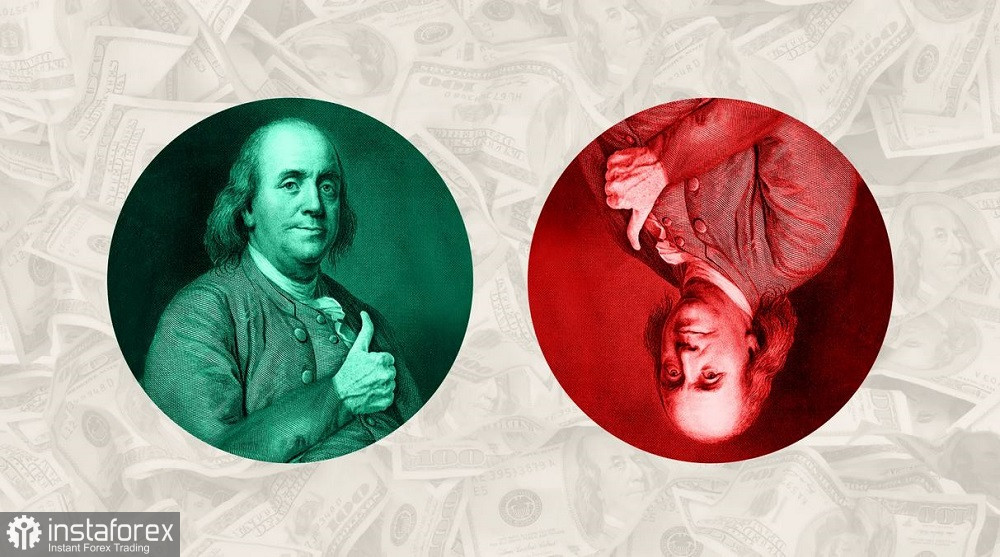The EUR/USD pair is trading in a flat. For the second day, the price fluctuates in a narrow range: EUR/USD buyers cannot hold above the 1.09 area, while sellers cannot push below the intermediate support level of 1.0870. As a result, the pair is spinning in a 30-point price channel, reflecting the indecision of both bulls and bears.
However, this indecision among traders is quite justified. The loud political events in the USA took market participants by surprise. At the end of last week, the dollar actively strengthened its position "in anticipation" of Trump's potential second term as the Republican leader's ratings surged. But this week, the situation changed: Biden stepped down, and the financial world turned its attention to the most likely Democratic candidate, Kamala Harris. Today, information emerged that she had secured the support of enough Democrats to become her party's presidential candidate. This is unofficial information based on a poll conducted by the Associated Press among party convention delegates.
The question arises: why are traders so engaged in the American presidential election process?

This is a temporary phenomenon driven by several reasons. The first reason is the informational vacuum. The economic calendar for the first three days of the current week is practically empty for EUR/USD. The main reports (on US GDP growth and the core PCE index) will be released on Thursday and Friday, respectively. Additionally, the blackout period is in effect - a 10-day period before the Fed meeting during which members of the regulator are prohibited from making their assessments and forecasts public.
Finally, the element of surprise played a role: Trump's chances of winning increased after the assassination attempt. The scenario of his return to the White House began to be considered not hypothetical but quite real. This was followed by analyzing his possible/probable actions as president. Almost all experts agree that Trump will pursue a more inflationary policy.
Specifically, he is likely to restrict immigration significantly, increasing wage pressure by removing cheap labor. Moreover, the Republican leader has already announced a new trade war with China, promising to impose new tariffs on Chinese goods (from 60% to 100%). He also stated that he would establish a 10% tariff on imports from other countries. Most analysts believe that Trump's actions in the foreign economic sphere will only strengthen the greenback, as high tariffs will accelerate inflation, and the Fed will have to respond to the "new reality." Analysts at Macquarie Investment Bank believe that the Fed's easing cycle "may be shorter than expected under such a scenario." The independence of the Federal Reserve will be tested again (as it was during Trump's first term when he relentlessly criticized Powell). Still, the regulator is unlikely to "bend" to the White House - at least while Jerome heads the Fed (his term ends in 2026).
In other words, as soon as Trump's presidential odds increased, the market began to recall his first term and relate his past actions to key points of his campaign. The beneficiary of such considerations became the greenback, despite Trump stating that the national currency should be weakened.
If Biden had not left the race, the dollar would have continued to strengthen gradually: it would have been "trading on Trump" instead of "trading on the Fed."
But Kamala Harris's entrance changed the game. Although Trump still leads in the polls, his victory is no longer guaranteed 100%. At least not at this moment. Thus, the EUR/USD pair has essentially stalled in indecision.
Which way will the scales tip? South or North? I think it will depend not on political factors but on "classic" ones. Of course, unless American politics surprises us again with a plot twist (e.g., if Biden resigns, transferring his powers to the vice president). If further political events in the US follow a measured election race, traders will switch to macroeconomic reports. For instance, tomorrow, the PMI indices will be published; on Thursday, data on US economic growth in the second quarter, and on Friday, the core PCE index. The direction of EUR/USD will depend on the dynamics of these indicators.
For now, it is advisable to wait and see, as the pair fluctuates in a narrow price range amidst an empty economic calendar and significant political events in the USA. Such an "eco-environment" is inherently unstable and difficult to predict.





















